Family & Children Health › The Pregnancy › ART Techniques Today
Assisted reproductive technology (ART) is a general term referring to methods used to achieve pregnancy by artificial or partially artificial means. It is reproductive technology used primarily in infertility treatments, otherwise known as fertility treatments.
Usage of the ART mainly belongs in the field of reproductive endocrinology and infertility. While there is no consensus on the definition, generally the process of intercourse is bypassed either by artificial insemination or fertilization of the oocytes in the laboratory environment (i.e., in vitro fertilization). Definition of ART includes all fertility treatments in which both eggs and sperm are handled. In general, ART procedures involve surgically removing eggs from a woman’s ovaries, combining them with sperm in the laboratory, and returning them to the woman’s body or donating them to another woman. They do not include treatments in which only sperm are handled (i.e.intrauterine—or artificial insemination) or procedures in which a woman takes medicine only to stimulate egg production without the intention of having eggs retrieved.
Which Patients should opt for ART?
All the patients who have completed basic infertility evaluation should consider ART. These advanced ART techniques involve physical, emotional, and financial demands and hence this are generally used in patients who have tried all less complex and less expensive methods of correcting their infertility. The majority of patients in ART programs suffer from tubal factor, male factor, unexplained infertility or certain inherited genetic diseases. ART candidates who will be using their own eggs should be under 44 years of age and should have No evidence of premature menopause, At least one accessible ovary and a normal uterus. Menopause and ovarian function are irrelevant for candidates using donor eggs. Donor egg recipients should be under 50 years of age and should have a normal uterus. All ART candidates should be in good health and have no medical conditions that would pose a serious health risk to themselves or the child they would carry.
Patient Evaluation
Before starting with ART therapy each patient is evaluated to help maximize her chances for success. Patients should have a complete physical exam, including a breast exam and Pap smear, within one year. It is recommended that women of 40 years of age and older have an annual mammogram. Apart from this basic test that a patient has to undergo includes
1) Blood Test: This includes routine blood test,blood test to screen for antibodies, hepatitis, HIV (AIDS), syphilis (RPR) and Cystic Fibrosis (a serious inherited disease affecting the respiratory system), chickenpox, measles, diabetes and thyroid.
2) Ovarian Reserve Testing: Ovarian reserve testing (ORT) is done to assess the function and quality of the ovaries. Ovarian reserve screening is one mechanism by which fertility specialists can partially predict the reproductive potential of a specific patient as well as the potential of her eggs to result in a healthy pregnancy. This information can be used to help couples decide which therapies may be emotionally and financially sound to pursue. There are essentially 4 different screening tests for ovarian reserve. Three of them are hormonal blood tests, and the third is an ultrasound examination. They are Day 3 FSH level test, Clomiphene citrate challenge test, AMH (antimullerian hormone) and ultrasound parameter test.
3) Semen Test: Changes in sperm quality may occur over time that could affect ART therapy. The complex semen analysis checks for sperm number, shape, swimming ability, survival, significant infection, and antisperm antibodies. In some cases, additional semen testing may be recommended.
4) Uterus: The anatomy of the uterus is usually evaluated prior to ART. Three methods can be used: an x-ray procedure (hysterosalpingogram - "HSG"), an ultrasound procedure (sonohysterogram or SIS),or a hysteroscopy.
Today, assisted reproductive technology (ART) refers not only to IVF but also to several variations tailored to patients' unique conditions. These procedures are usually paired with more conventional therapies, such as fertility drugs, to increase success rates. Almost one out of every three cycles of ART results in the birth of a baby.
But ART procedures are invasive and expensive. Though no long-term health effects have been linked to children born using ART procedures, most doctors recommend reserving ART as a last resort for having a baby.
What are the different types of assisted reproductive technology (ART)?
The objective of ART is to create an embryo by bypassing the factor(s) causing the fertility problem. Common methods of ART include:
In vitro fertilization (IVF): This is one of the most commonly used procedures. Your eggs are combined with your partner's sperm in a dish in a laboratory. Once fertilization has occurred, the resulting embryos develop for 3 to 5 days before being placed in your uterus.
Intracytoplasmic sperm injection (ICSI): One of your partner's sperm is placed inside your egg with a microscopic needle, rather than many sperm positioned close to the outside of the egg, as in IVF, in a dish in a lab. Once fertilization occurs, the resulting embryo is placed in your uterus.
Gamete intrafallopian transfer (GIFT): Your eggs are combined with your partner's sperm in a dish in a lab, then surgically injected into your fallopian tubes using a laparoscope or fiber-thin tube. Fertilization happens inside your body, and the embryo implants naturally. Although this procedure was once commonly practiced, it's rarely used today because the success with IVF is far greater on average.
Zygote intrafallopian transfer (ZIFT): As with GIFT, your eggs are mixed with your partner's sperm in a dish in a lab, then surgically placed in your fallopian tubes. But, as with IVF, your doctor will wait until fertilization occurs to place your embryos inside of you. This procedure is no longer commonly performed because it has a lower success rate than IVF.
Donor egg or embryo: If you're unable to conceive using your own eggs, an egg donated by another woman is mixed with your partner's sperm and the resulting embryo is implanted in your uterus. This procedure also can be done with a donated embryo or sperm.
Surrogacy, or use of a gestational carrier: Another woman carries your embryo, or a donor embryo, to term and gives the baby to you after birth.
Risks
some studies have suggested that assisted reproductive technology is associated with an increased risk of birth defects like Genetic disorders, Low birth weight, Membrane damage and Preterm birth. Current data indicate little or no increased risk for postpartum depression among women who use ART. Risk of multiple pregnancy is also a point of concern.
Couples who are considering ART should realize that it is an intensely emotional, physically arduous, and expensive procedure. Couples should explore plans for the future, whether or not their attempts at ART are successful. In addition, psychological support can be helpful to couples undergoing this treatment.
Before you make up your mind about ART,IVF, talk to your doctor or visit with a IVF reproductive Treatment Specialist to discuss which infertility treatments are right for your situation.
So if you are considering the option of Assisted Reproductive Technology like IVF, ICSI, GIFT, ZIFT, Donor egg or embryo or Surrogacy then start contacting fertility experts in India ,IVF specialist today for ultimate Modern Reproductive Technologies: Infertility Treatment at http://www.blossomivfindia.com/fertility-treatments
Our expertise in infertility treatment and cutting edge IVF technology has helped majority of our patients achieve pregnancy.
Start Realising your dream of child today:Embryo freezing service, Treatment Specialist
Blossom Fertility and IVF Centre
Sutaria Building Opp.Bahumali Building,
Nanpura, Surat-395003,
Gujarat,
INDIA
Phone: +91 261 2470333, +91 261 2470444
Mobile: +9199799 46222
http://www.blossomivfindia.com
Usage of the ART mainly belongs in the field of reproductive endocrinology and infertility. While there is no consensus on the definition, generally the process of intercourse is bypassed either by artificial insemination or fertilization of the oocytes in the laboratory environment (i.e., in vitro fertilization). Definition of ART includes all fertility treatments in which both eggs and sperm are handled. In general, ART procedures involve surgically removing eggs from a woman’s ovaries, combining them with sperm in the laboratory, and returning them to the woman’s body or donating them to another woman. They do not include treatments in which only sperm are handled (i.e.intrauterine—or artificial insemination) or procedures in which a woman takes medicine only to stimulate egg production without the intention of having eggs retrieved.
Which Patients should opt for ART?
All the patients who have completed basic infertility evaluation should consider ART. These advanced ART techniques involve physical, emotional, and financial demands and hence this are generally used in patients who have tried all less complex and less expensive methods of correcting their infertility. The majority of patients in ART programs suffer from tubal factor, male factor, unexplained infertility or certain inherited genetic diseases. ART candidates who will be using their own eggs should be under 44 years of age and should have No evidence of premature menopause, At least one accessible ovary and a normal uterus. Menopause and ovarian function are irrelevant for candidates using donor eggs. Donor egg recipients should be under 50 years of age and should have a normal uterus. All ART candidates should be in good health and have no medical conditions that would pose a serious health risk to themselves or the child they would carry.
Patient Evaluation
Before starting with ART therapy each patient is evaluated to help maximize her chances for success. Patients should have a complete physical exam, including a breast exam and Pap smear, within one year. It is recommended that women of 40 years of age and older have an annual mammogram. Apart from this basic test that a patient has to undergo includes
1) Blood Test: This includes routine blood test,blood test to screen for antibodies, hepatitis, HIV (AIDS), syphilis (RPR) and Cystic Fibrosis (a serious inherited disease affecting the respiratory system), chickenpox, measles, diabetes and thyroid.
2) Ovarian Reserve Testing: Ovarian reserve testing (ORT) is done to assess the function and quality of the ovaries. Ovarian reserve screening is one mechanism by which fertility specialists can partially predict the reproductive potential of a specific patient as well as the potential of her eggs to result in a healthy pregnancy. This information can be used to help couples decide which therapies may be emotionally and financially sound to pursue. There are essentially 4 different screening tests for ovarian reserve. Three of them are hormonal blood tests, and the third is an ultrasound examination. They are Day 3 FSH level test, Clomiphene citrate challenge test, AMH (antimullerian hormone) and ultrasound parameter test.
3) Semen Test: Changes in sperm quality may occur over time that could affect ART therapy. The complex semen analysis checks for sperm number, shape, swimming ability, survival, significant infection, and antisperm antibodies. In some cases, additional semen testing may be recommended.
4) Uterus: The anatomy of the uterus is usually evaluated prior to ART. Three methods can be used: an x-ray procedure (hysterosalpingogram - "HSG"), an ultrasound procedure (sonohysterogram or SIS),or a hysteroscopy.
Today, assisted reproductive technology (ART) refers not only to IVF but also to several variations tailored to patients' unique conditions. These procedures are usually paired with more conventional therapies, such as fertility drugs, to increase success rates. Almost one out of every three cycles of ART results in the birth of a baby.
But ART procedures are invasive and expensive. Though no long-term health effects have been linked to children born using ART procedures, most doctors recommend reserving ART as a last resort for having a baby.
What are the different types of assisted reproductive technology (ART)?
The objective of ART is to create an embryo by bypassing the factor(s) causing the fertility problem. Common methods of ART include:
In vitro fertilization (IVF): This is one of the most commonly used procedures. Your eggs are combined with your partner's sperm in a dish in a laboratory. Once fertilization has occurred, the resulting embryos develop for 3 to 5 days before being placed in your uterus.
Intracytoplasmic sperm injection (ICSI): One of your partner's sperm is placed inside your egg with a microscopic needle, rather than many sperm positioned close to the outside of the egg, as in IVF, in a dish in a lab. Once fertilization occurs, the resulting embryo is placed in your uterus.
Gamete intrafallopian transfer (GIFT): Your eggs are combined with your partner's sperm in a dish in a lab, then surgically injected into your fallopian tubes using a laparoscope or fiber-thin tube. Fertilization happens inside your body, and the embryo implants naturally. Although this procedure was once commonly practiced, it's rarely used today because the success with IVF is far greater on average.
Zygote intrafallopian transfer (ZIFT): As with GIFT, your eggs are mixed with your partner's sperm in a dish in a lab, then surgically placed in your fallopian tubes. But, as with IVF, your doctor will wait until fertilization occurs to place your embryos inside of you. This procedure is no longer commonly performed because it has a lower success rate than IVF.
Donor egg or embryo: If you're unable to conceive using your own eggs, an egg donated by another woman is mixed with your partner's sperm and the resulting embryo is implanted in your uterus. This procedure also can be done with a donated embryo or sperm.
Surrogacy, or use of a gestational carrier: Another woman carries your embryo, or a donor embryo, to term and gives the baby to you after birth.
Risks
some studies have suggested that assisted reproductive technology is associated with an increased risk of birth defects like Genetic disorders, Low birth weight, Membrane damage and Preterm birth. Current data indicate little or no increased risk for postpartum depression among women who use ART. Risk of multiple pregnancy is also a point of concern.
Couples who are considering ART should realize that it is an intensely emotional, physically arduous, and expensive procedure. Couples should explore plans for the future, whether or not their attempts at ART are successful. In addition, psychological support can be helpful to couples undergoing this treatment.
Before you make up your mind about ART,IVF, talk to your doctor or visit with a IVF reproductive Treatment Specialist to discuss which infertility treatments are right for your situation.
So if you are considering the option of Assisted Reproductive Technology like IVF, ICSI, GIFT, ZIFT, Donor egg or embryo or Surrogacy then start contacting fertility experts in India ,IVF specialist today for ultimate Modern Reproductive Technologies: Infertility Treatment at http://www.blossomivfindia.com/fertility-treatments
Our expertise in infertility treatment and cutting edge IVF technology has helped majority of our patients achieve pregnancy.
Start Realising your dream of child today:Embryo freezing service, Treatment Specialist
Blossom Fertility and IVF Centre
Sutaria Building Opp.Bahumali Building,
Nanpura, Surat-395003,
Gujarat,
INDIA
Phone: +91 261 2470333, +91 261 2470444
Mobile: +9199799 46222
http://www.blossomivfindia.com
Article By: Blossom IvfIndia
Get pregnant with Endometriosis
What is Diminishing Ovarian Reserve (DOR)?
Facts to know about effects of Smoking on Fertility, Infertility & IVF
Infertility, IVF and Stress
Weight of parents during conception hampers Childs fertility
Test Tube Baby Centre
Weird things that can mess up with your fertility
Most Read
New Articles
Most Viewed
Most Downloads
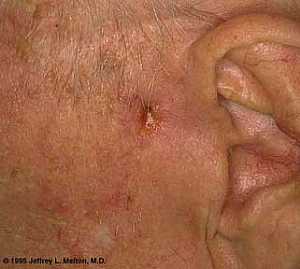 Basal Cell Carcinoma ("Rodent Ulcer" Type)
Basal Cell Carcinoma ("Rodent Ulcer" Type)
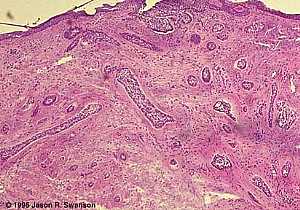 Basal Cell Carcinoma (Histology-Morpheaform Type)
Basal Cell Carcinoma (Histology-Morpheaform Type)
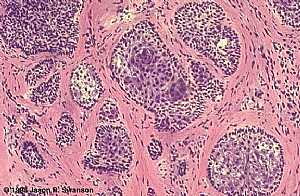 Basal Cell Carcinoma (Histology-Nodular Type - High power)
Basal Cell Carcinoma (Histology-Nodular Type - High power)
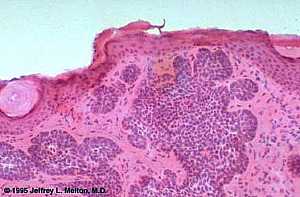 Basal Cell Carcinoma (Histology-Nodular Type- High power)
Basal Cell Carcinoma (Histology-Nodular Type- High power)
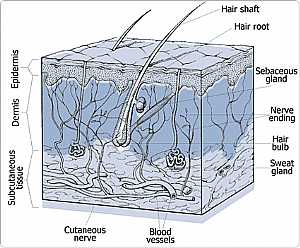 Skin
Skin
 Nervous System -- Basic
Nervous System -- Basic
 Brain anatomy
Brain anatomy
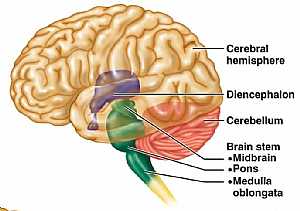 Brain anatomy
Brain anatomy
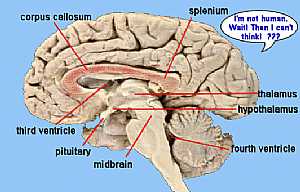 Brain anatomy
Brain anatomy
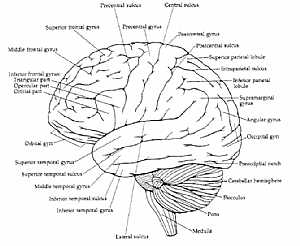 Brain anatomy
Brain anatomy
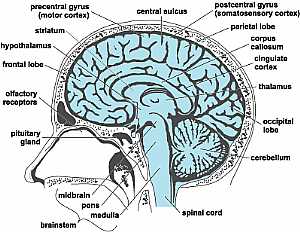 Head anatomy
Head anatomy
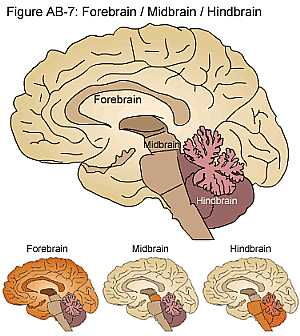 Brain anatomy
Brain anatomy
eDoctorOnline.com does not provide medical advice, diagnosis or treatment.
© Copyright 2001-2022 eDoctorOnline.com
© Copyright 2001-2022 eDoctorOnline.com

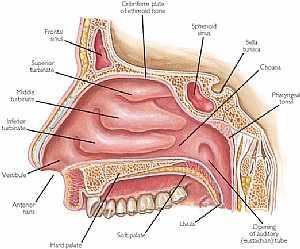 Nose anatomy
Nose anatomy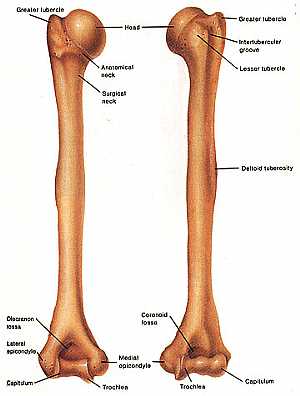 Humerus bone
Humerus bone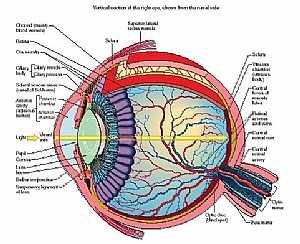 Eye anatomy
Eye anatomy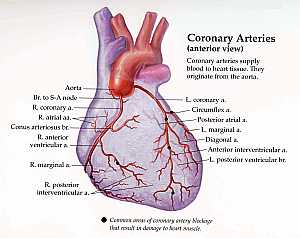 Coronary arteries anatomy
Coronary arteries anatomy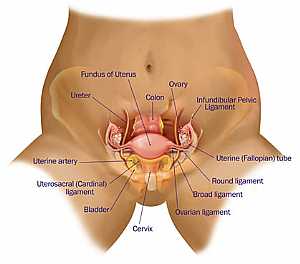 Female pelvic anatomy
Female pelvic anatomy Heart and lung anatomy
Heart and lung anatomy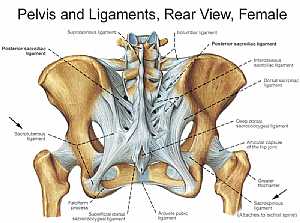 Bones and ligaments of the FEMALE Pelvis
Bones and ligaments of the FEMALE Pelvis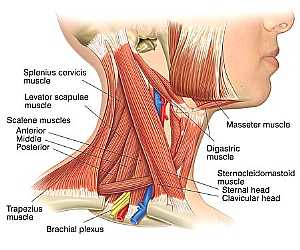 Neck Anatomy
Neck Anatomy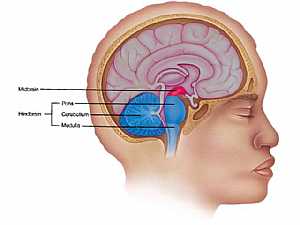 MidBrain anatomy
MidBrain anatomy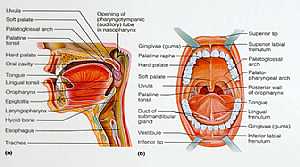 Oral Cavity
Oral Cavity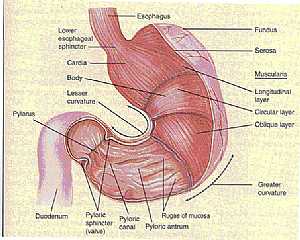 Stomach anatomy
Stomach anatomy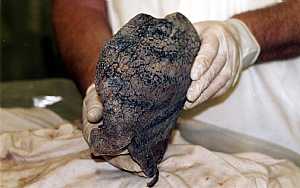 Lung anatomy
Lung anatomy Basal Cell Carcinoma ("Rodent Ulcer" Type)
Basal Cell Carcinoma ("Rodent Ulcer" Type) Basal Cell Carcinoma (Histology-Morpheaform Type)
Basal Cell Carcinoma (Histology-Morpheaform Type) Basal Cell Carcinoma (Histology-Nodular Type - High power)
Basal Cell Carcinoma (Histology-Nodular Type - High power) Basal Cell Carcinoma (Histology-Nodular Type- High power)
Basal Cell Carcinoma (Histology-Nodular Type- High power) Skin
Skin Nervous System -- Basic
Nervous System -- Basic Brain anatomy
Brain anatomy Brain anatomy
Brain anatomy Brain anatomy
Brain anatomy Brain anatomy
Brain anatomy Head anatomy
Head anatomy Brain anatomy
Brain anatomy
Be the first one to comment on this article!